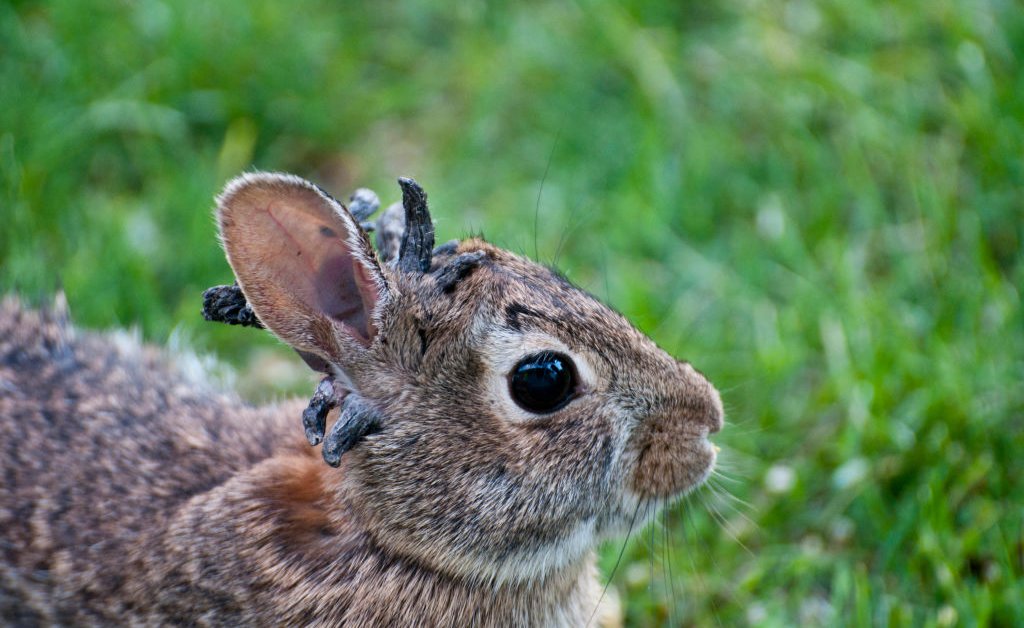Colorado Rabbit Disease: Facts, Prevention, And What To Do If You See One

Welcome to your ultimate source for breaking news, trending updates, and in-depth stories from around the world. Whether it's politics, technology, entertainment, sports, or lifestyle, we bring you real-time updates that keep you informed and ahead of the curve.
Our team works tirelessly to ensure you never miss a moment. From the latest developments in global events to the most talked-about topics on social media, our news platform is designed to deliver accurate and timely information, all in one place.
Stay in the know and join thousands of readers who trust us for reliable, up-to-date content. Explore our expertly curated articles and dive deeper into the stories that matter to you. Visit Best Website now and be part of the conversation. Don't miss out on the headlines that shape our world!
Table of Contents
Colorado Rabbit Disease: Facts, Prevention, and What to Do If You See a Sick Rabbit
A deadly disease is impacting rabbit populations in Colorado. Learn the facts about Tularemia, how to protect yourself and your pets, and what actions to take if you encounter a sick rabbit.
Colorado's stunning landscapes are home to a diverse range of wildlife, including rabbits. However, a concerning threat is impacting these populations: Tularemia, often referred to as rabbit fever. This bacterial disease, while not directly affecting humans as often as some headlines might suggest, presents a serious risk to both wildlife and, indirectly, people. Understanding Tularemia, its symptoms in rabbits, and preventative measures is crucial for responsible coexistence with Colorado's natural inhabitants.
What is Tularemia?
Tularemia is a bacterial infection caused by Francisella tularensis. It's a zoonotic disease, meaning it can spread from animals to humans. While rabbits are a primary reservoir, the bacteria can also infect other animals like rodents, squirrels, and even some birds. Transmission to humans typically occurs through:
- Direct contact: Handling infected animals (dead or alive) without proper protection.
- Insect bites: Ticks, mosquitoes, and deer flies can carry the bacteria and transmit it through bites.
- Ingestion: Consuming undercooked meat from infected animals.
- Inhalation: Breathing in contaminated dust or aerosols.
Identifying a Rabbit with Tularemia
Recognizing the signs of Tularemia in rabbits is vital for both the animal's welfare and human safety. Infected rabbits often exhibit:
- Lethargy and weakness: Noticeable lack of energy and movement.
- Loss of appetite: Refusal to eat or drink.
- Swollen lymph nodes: Visible swelling in the neck or groin area.
- Ulcers: Open sores or lesions on the skin.
- Respiratory distress: Difficulty breathing.
- Sudden death: In many cases, death occurs rapidly.
Important Note: Not all rabbits showing these symptoms necessarily have Tularemia. Other illnesses can cause similar signs. However, it's crucial to exercise caution and avoid direct contact.
Preventing Tularemia Exposure
Protecting yourself and your pets from Tularemia requires awareness and preventative measures:
- Avoid contact with wild rabbits: Do not handle dead or sick rabbits. Even seemingly healthy rabbits can carry the bacteria.
- Wear protective gear: If you must handle a rabbit (for example, a veterinarian treating an animal), use gloves, eye protection, and a mask.
- Use insect repellent: Apply insect repellent containing DEET, picaridin, or IR3535 when spending time outdoors, especially in areas with high tick and mosquito populations.
- Practice good hygiene: Wash your hands thoroughly with soap and water after handling any wild animal or spending time outdoors.
- Cook meat thoroughly: Ensure all meat is cooked to a safe internal temperature to kill any potential bacteria.
What to Do If You See a Sick Rabbit
If you encounter a sick or dead rabbit in Colorado, do not touch it. Instead:
- Contact your local wildlife agency or animal control: They can assess the situation and determine the appropriate course of action. This is crucial for both public health and wildlife management.
- Keep pets away: Prevent your pets from approaching or interacting with the rabbit.
- Avoid the area: Stay away from the immediate vicinity of the sick or dead rabbit.
Seeking Medical Attention
If you suspect you may have been exposed to Tularemia, seek immediate medical attention. Early diagnosis and treatment with antibiotics are essential for a favorable outcome. Symptoms in humans can range from mild to severe and include fever, chills, swollen lymph nodes, and skin ulcers.
By understanding the risks associated with Tularemia and taking appropriate precautions, we can help protect both ourselves and Colorado's wildlife population. Remember, responsible outdoor recreation involves awareness of potential hazards and proactive measures to mitigate risk. Stay informed, stay safe, and enjoy Colorado's natural beauty responsibly.

Thank you for visiting our website, your trusted source for the latest updates and in-depth coverage on Colorado Rabbit Disease: Facts, Prevention, And What To Do If You See One. We're committed to keeping you informed with timely and accurate information to meet your curiosity and needs.
If you have any questions, suggestions, or feedback, we'd love to hear from you. Your insights are valuable to us and help us improve to serve you better. Feel free to reach out through our contact page.
Don't forget to bookmark our website and check back regularly for the latest headlines and trending topics. See you next time, and thank you for being part of our growing community!
Featured Posts
-
 Cincinnati Reds Falter Against Dodgers Playoff Push Stumbles
Aug 27, 2025
Cincinnati Reds Falter Against Dodgers Playoff Push Stumbles
Aug 27, 2025 -
 Following Texas And California A Look At Upcoming State Redistricting Efforts
Aug 27, 2025
Following Texas And California A Look At Upcoming State Redistricting Efforts
Aug 27, 2025 -
 Three Performances That Shaped Keke Palmers Career A Retrospective
Aug 27, 2025
Three Performances That Shaped Keke Palmers Career A Retrospective
Aug 27, 2025 -
 Thousands Affected Valley Power Grid Crumbles Under Monsoon Storm Impact
Aug 27, 2025
Thousands Affected Valley Power Grid Crumbles Under Monsoon Storm Impact
Aug 27, 2025 -
 Dodgers 6 M Offseason Pitcher Out For October Velocity Concerns Confirmed
Aug 27, 2025
Dodgers 6 M Offseason Pitcher Out For October Velocity Concerns Confirmed
Aug 27, 2025
 International Outrage Grows After Gaza Hospital Airstrike Trump Issues Statement
International Outrage Grows After Gaza Hospital Airstrike Trump Issues Statement
 Gaza Hospital Bombing Trumps Reaction To Israeli Airstrike And Civilian Casualties
Gaza Hospital Bombing Trumps Reaction To Israeli Airstrike And Civilian Casualties
 Israeli Airstrike On Gaza Hospital Trump Condemns Killing Of Journalists And Medics
Israeli Airstrike On Gaza Hospital Trump Condemns Killing Of Journalists And Medics
